If one desire true remoteness and isolation then one should consider experiencing the day to day life on the Indonesian Island of Nongkat, where the Danish Højskoleøen is located
The darkness is all consuming as I jump off a speedboat and into the warm water of the Southern Chinese Ocean. My pants are immediately soaked while I walk onto the island of Nongkat. I am greeted by eight people standing on the beach ready to receive me. None of them are wearing more than one would expect of a Dane in a place as hot as this. A big contrast to me, as I arrive from the Muslim culture with long pants and a T-shirt, showing minimal skin.
“Welcome to Højskoleøen,” a young woman greets me, as she shakes my hand.
Even in the darkness I can sense the clarity of the water, the abundance of stars in the sky, and that there is a special community on this Island.
Højskoleøen was established in 2023. To read more about its origin click here.
At the moment the school is having its fourth round of students. The 25 students are on this island for 8 weeks, where they receive courses in various watersports, culture and special courses on how to have a ‘højskole’ community. All of them took the same 11 hour trip from Batam as I did to get here.
The explanation of how this school came to be is one thing. Why the students choose to travel all the way to the school is a different story.
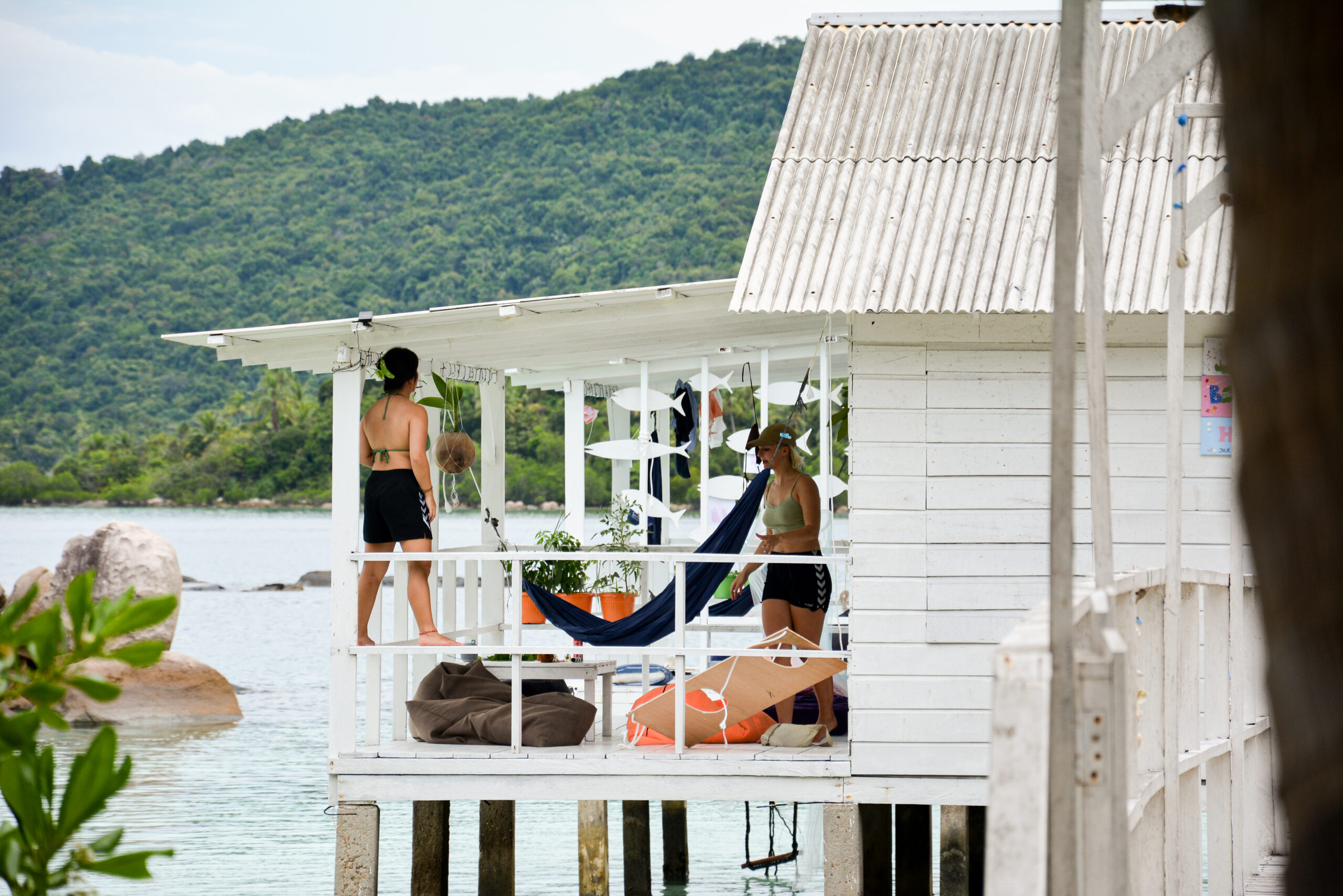
A tightly packed schedule
In the small bay on the western side of the island there are five small cottages and a larger house in the middle. The School consists of this, a sheltered eating area and two small houses for the teachers.
In between the large house and the student cottages the music starts. Every day from 6:45 there is a voluntary training session. Fifteen minutes marked for ‘Abb-attack’. This is followed by an all around training session. Even though it sounds early, many people on the island are already awake due to the heat.
Breakfast is until 9, where the courses start. Some students try to sleep in, as the training squad stumbles into the clear bay to wash off the dirt and sweat from their morning routine. All of them meet each other in the so-called ‘sand-bar’ where the meals at the school are consumed.
The students usually have two and a half hours of courses before and after lunch. There are often events planned for the evenings as well. Sometimes the students also arrange things on their own.
The courses in water sports include: scuba diving, free diving, paddle boarding, skurfing, underwater hunting with harpoon, kayaking and various games in the water. Out of the water the students can attend ball-games, cultural exchange visits to local schools, creative workshops and open debate classes on for instance cultural stereotypes.
It is also possible for the student to train and practice sailing on the island.
The day that began with ‘abb-attack’ at 6:30 often ends at around 9 or 10 pm, as the tiredness hangs in the air around the students. The teachers at the school however don’t see the tiredness as a sign of a too tight schedule.
“I don’t believe that the students have too much on their plate,” states Calle Marco Dahl, a water sport instructor at the school, “Of course they are a bit tired, but it truly seems like they also want to get the most out of their time here”.
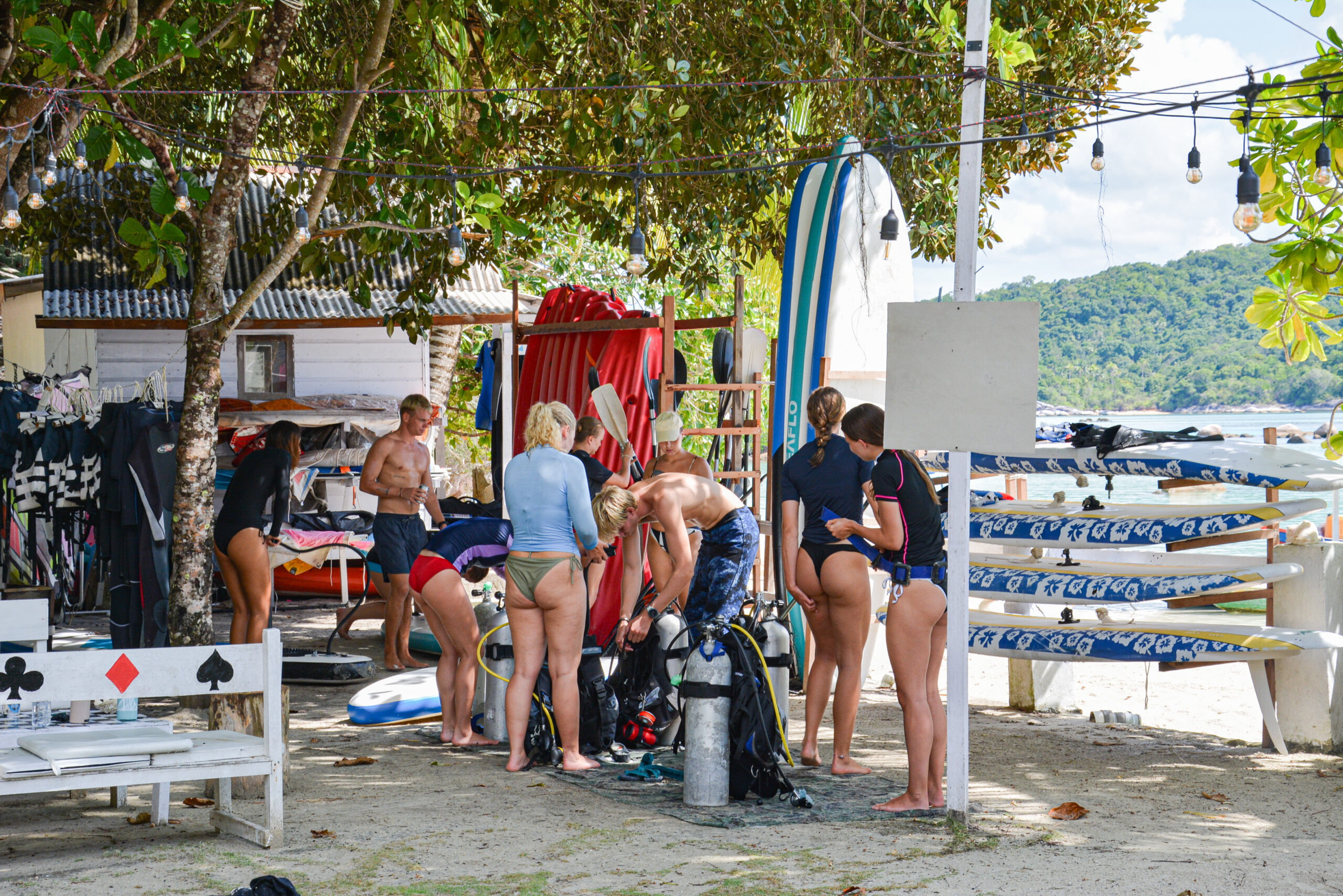
Get the most and best out of the stay
Freja Nikoline Kjær Larsen, a 20 year old student at the school, definitely thinks that Calle Marco Dahl has a point. She does want to experience as much as possible. But, she also admits that she does get quite tired.
“I am not participating in the morning workout, because I need to sleep just a little bit more,” she says and continues: “I don’t mind there being a full schedule, as I am really having fun and learning a lot, but we have also quickly learned that you need to take time for yourself. When people step away from the crowd it usually means that they need to recharge”.
And recharging might be necessary in a school like Højskoleøen. The island is very small and the students are living in close quarters. For another student Liva la Cour the small number of students was a bit of an adjustment in the beginning:
“We are so few students, so it becomes very important to get along socially. This is something that I thought a bit about in the beginning,” she states.
For Liva la Cour it is also a bit of a factor that there are so few male students at the school, as they, in her opinion, just have a tendency to care less about the small stuff and create a good vibe.
According to the teachers the tendency to divide into groups amongst the students is something they are aware of. This is also one of the reasons why they have a so-called ‘Højskole class’ every Friday. This class is used for the students to get mixed up and talk to new people. There is in general a significant focus from the founders and the teachers to create a place where there is a constructive community.
“This is one of the things that sets us aside from a regular course,” Diana Hackmann Hansen, one of the founders of the school, explains.
She also adds that the communal activities such as the regular singing evenings and the occasional party also really helps to create community among the students.
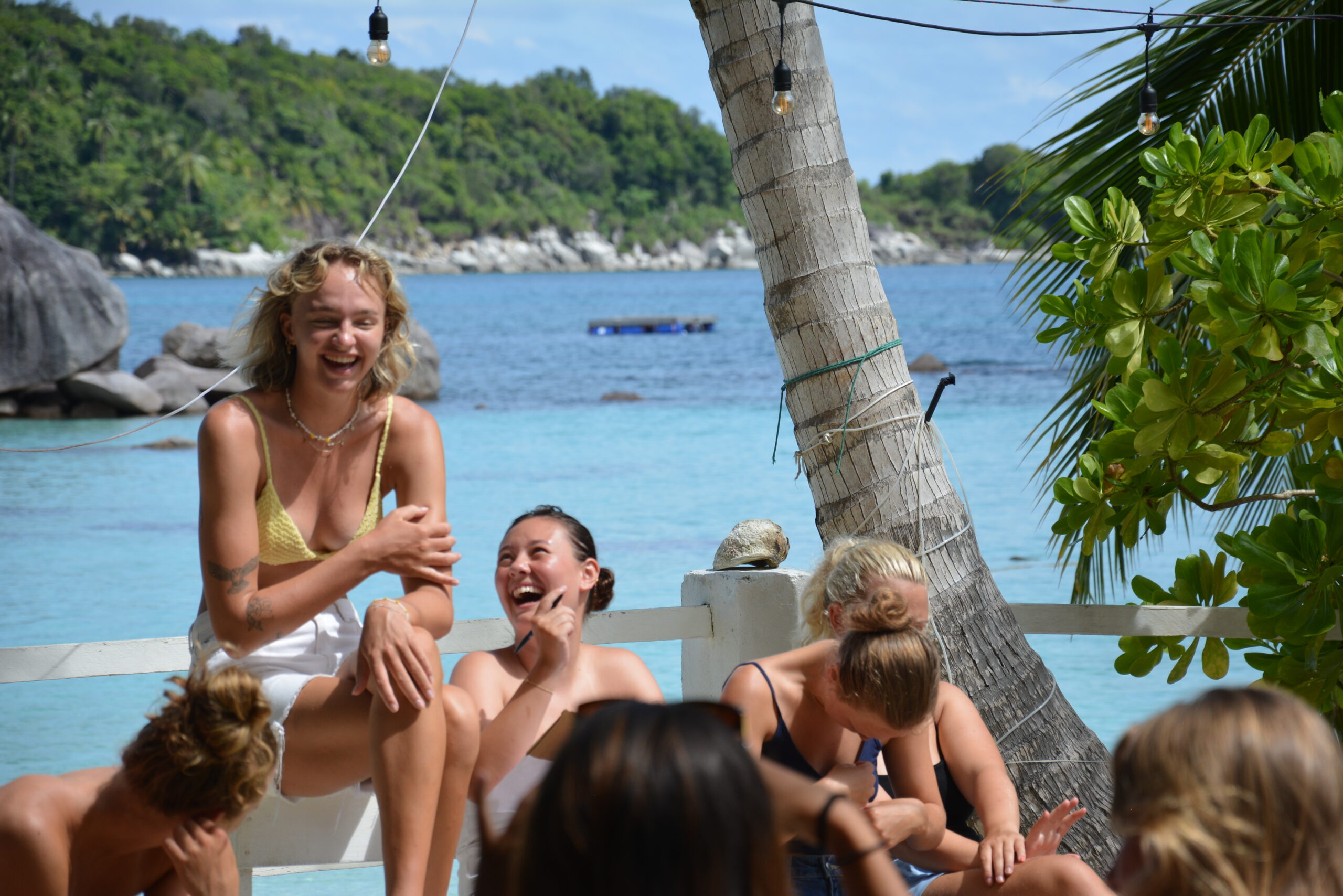
Different backgrounds and starting points
According to the founders, students used to find the school based on personal recommendations, but for at least a few students it was a way more modern method that led them to the remote shores of Højskoleøen.
“I actually just googled schools in Indonesia, and this popped up,” Kres Jespersen explains.
Kres Jespersen is one of the oldest students at the school. He is 28 years old, however he doesn’t feel it much in the day to day life:
“Of course there are moments where you realize that you are in completely different phases of life, but everyone has seeked out this school for the experiences. That creates common ground for us in the everyday life we have here,” he says.
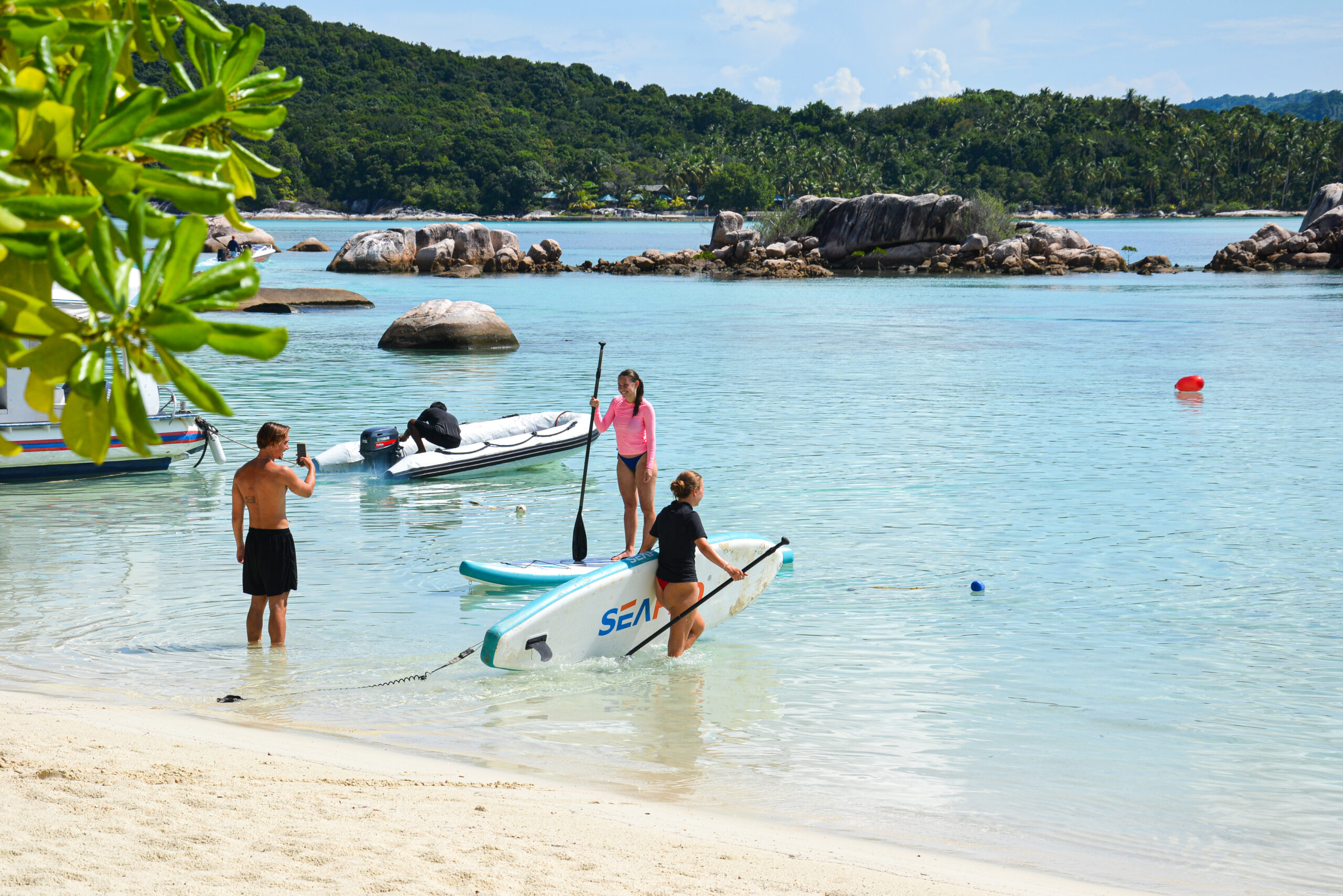
Curiosity is key
The students vary in age, future plans and in experience. For students like Kres Jespersen and Liva la Cour they both had experience with watersports and felt drawn to it. However, there are also students like Freja Nikoline Kjær Larsen, who has no experience in water sports:
“I have not done any of the sports before, but it sounded fun!,” she says.
Of course she can feel it sometimes when the others are better than her, but she credits the teachers for not making her feel pressured.
According to Calle Marco Dahl, this attitude is quite common:
“Of course we have students who are very dedicated, but mainly it is all about curiosity,” he explains.
It is clear that many students have been drawn to the island due to the sunny skies and the crystal clear water. Desiring to explore the reefs while diving and training their skills on paddle boards or skurfing. However, many of the students have been surprised with how much the culture classes and excursion have made an impression on them.
“I think one of my favorite things so far was when we made a trip to the city of Palmatak. We just sat on the back of a car and observed the people and it was just great,” Liva la Cour explains.
In general the students agree that they reflect a bit more than they might have expected when they go to visit the local areas.
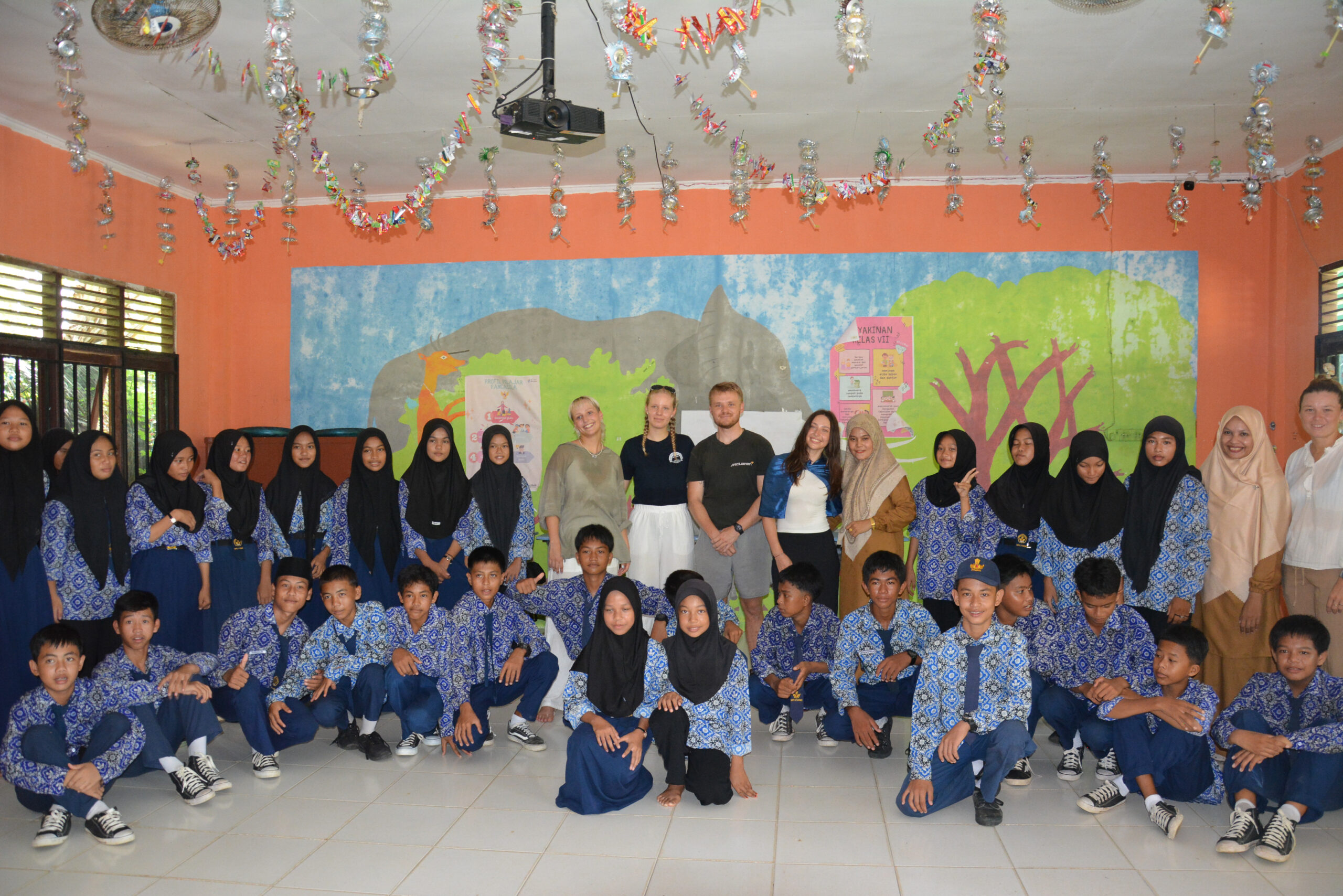
Adjusting to a different lifestyle
On the Island there is electricity, but it is shut off in the student houses during the day. There is no air condition and the temperature is easily around 30 degrees celsius night and day. The only relief from the heat is the shade, the ocean and the shared fans in the cottages:
“It is definitely something that you have to be prepared for and adjust to,” Kres Jespersen, one of the students states, but also elaborates that he does find the primitive lifestyle quite appealing: “At least for two months. It might be too much for me to be here for longer than that, especially with the bad wifi, but there is something nice about the simplicity of everyday life here”.
The simple life becomes obvious in how much all the activities depend on the weather. If it is raining aggressively then diving might get canceled. Trips to the local schools might have to be rescheduled if there is a shortage of Benzin in the area. This was the case when I arrived. In general the students, and the teacher for that matter, has to accept that they can’t control everything.
The simple lifestyle might actually force the students to not plan too much ahead, but just be in the moments.
The founders were very focused on making this school a safe space for the students to experience the culture and the nature from, before they travel on.
And so far it seems like they are succeeding. Only a few of the students are going straight home, but use the school as a stepping stone for more adventure.




